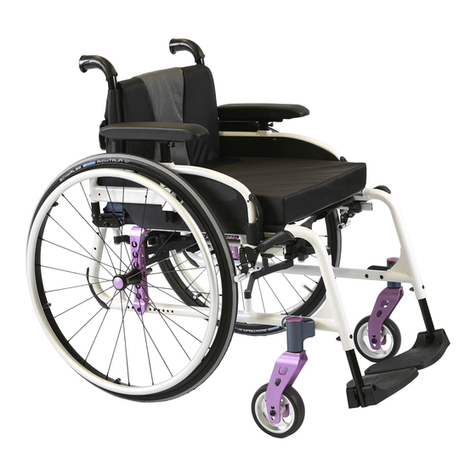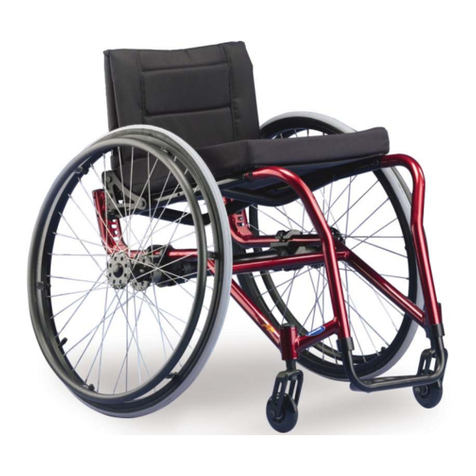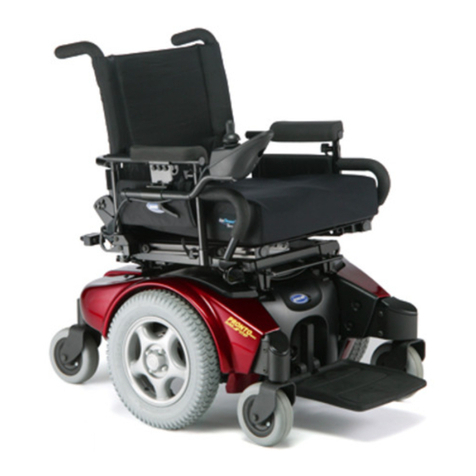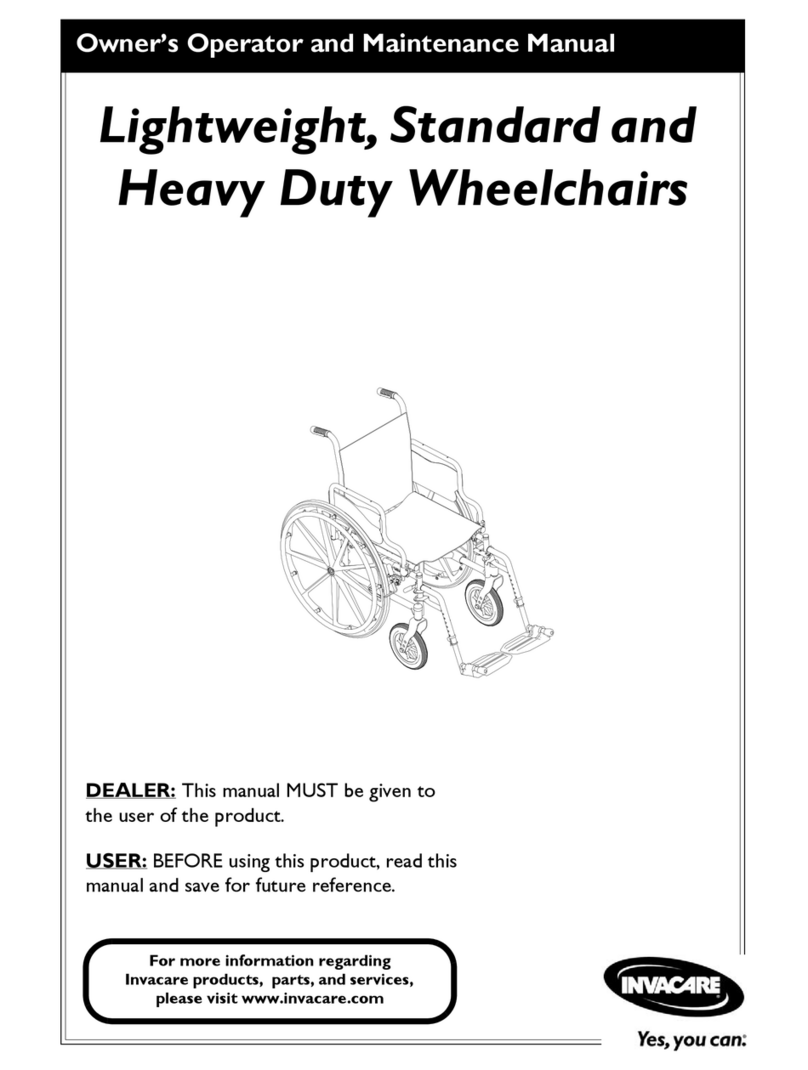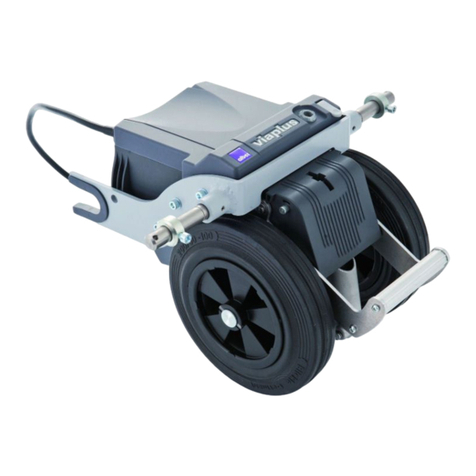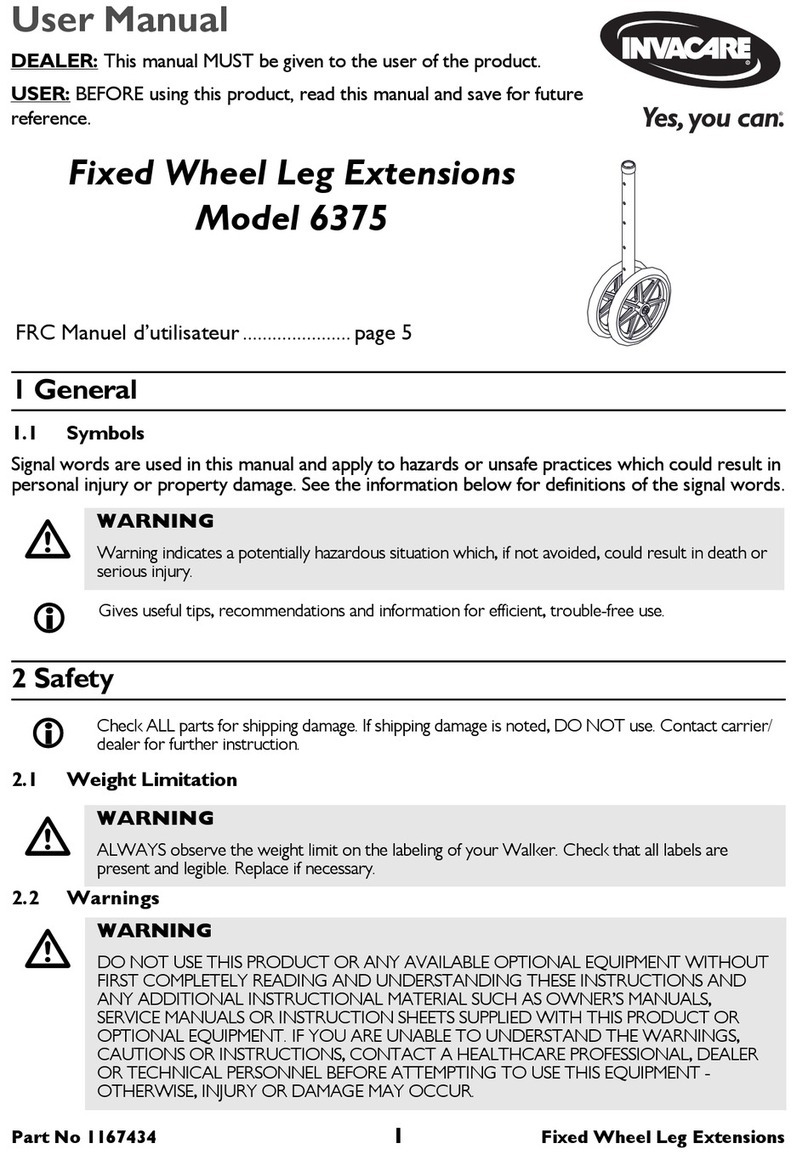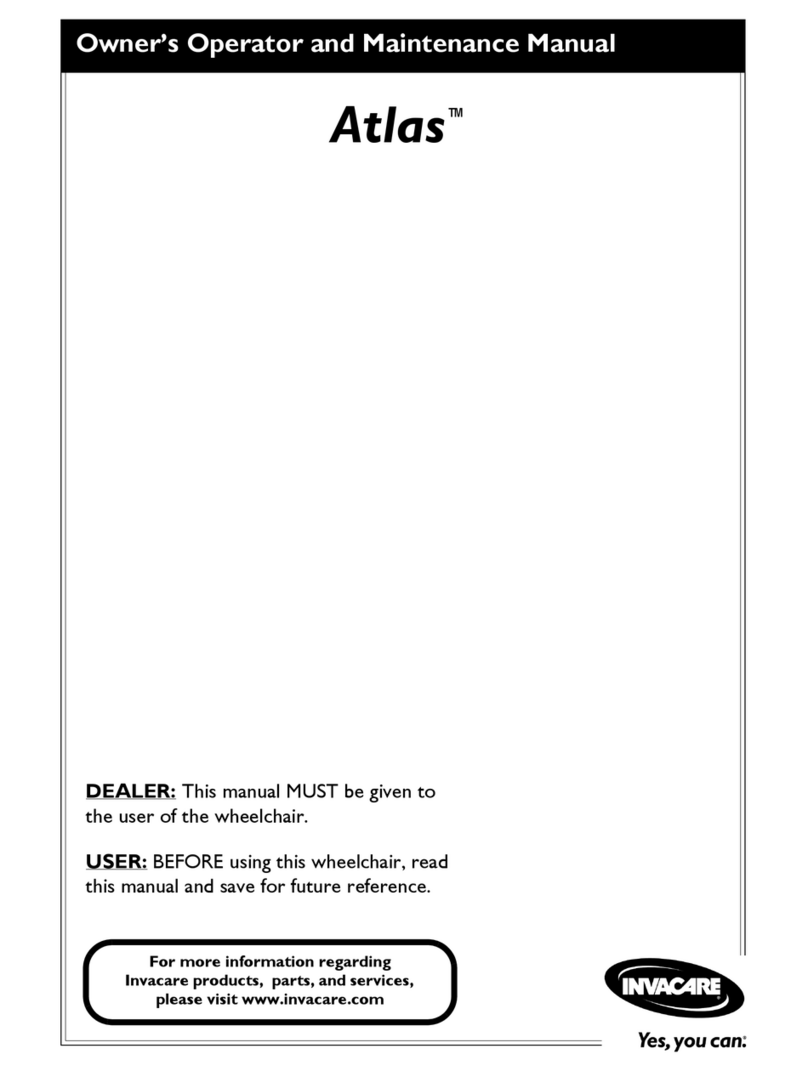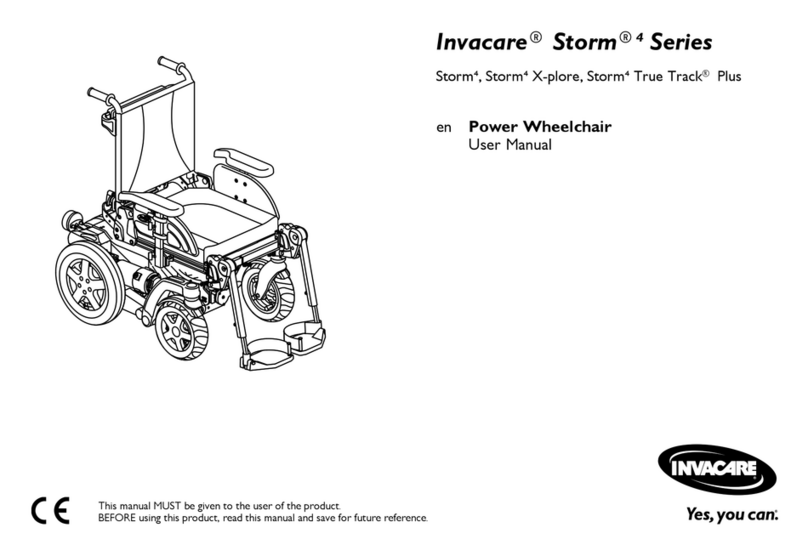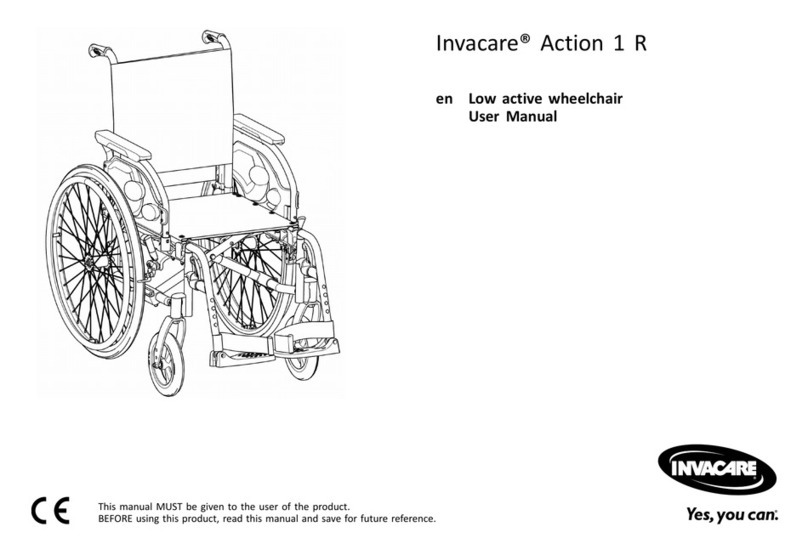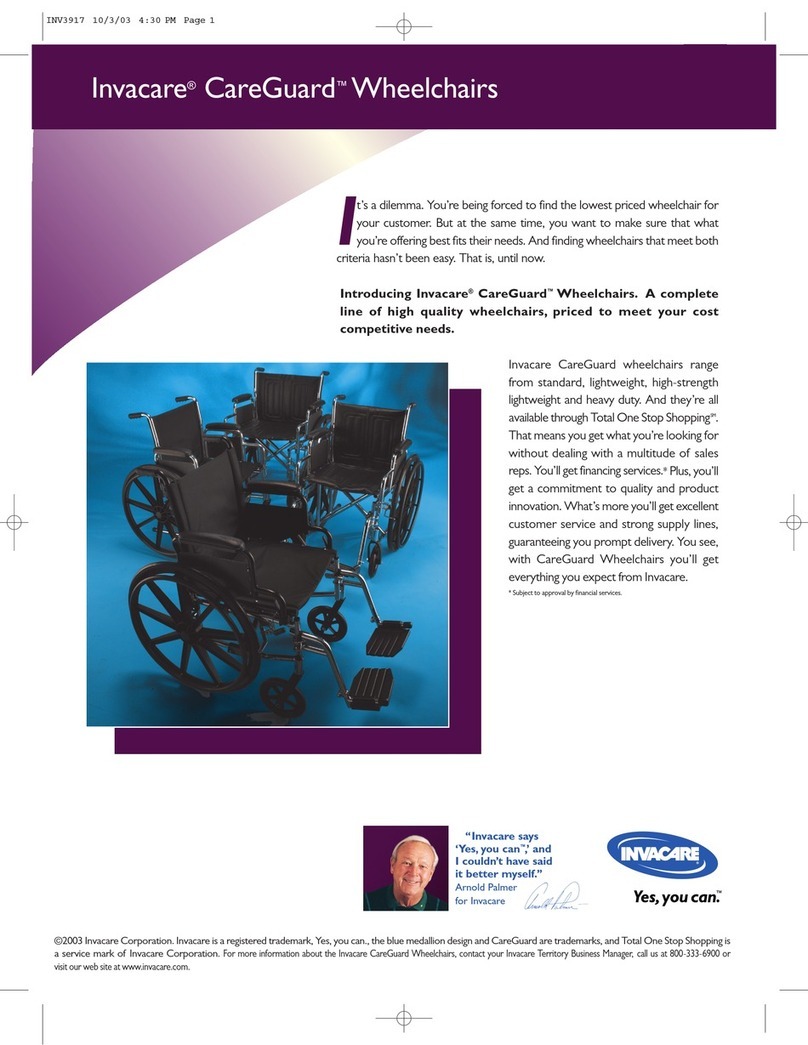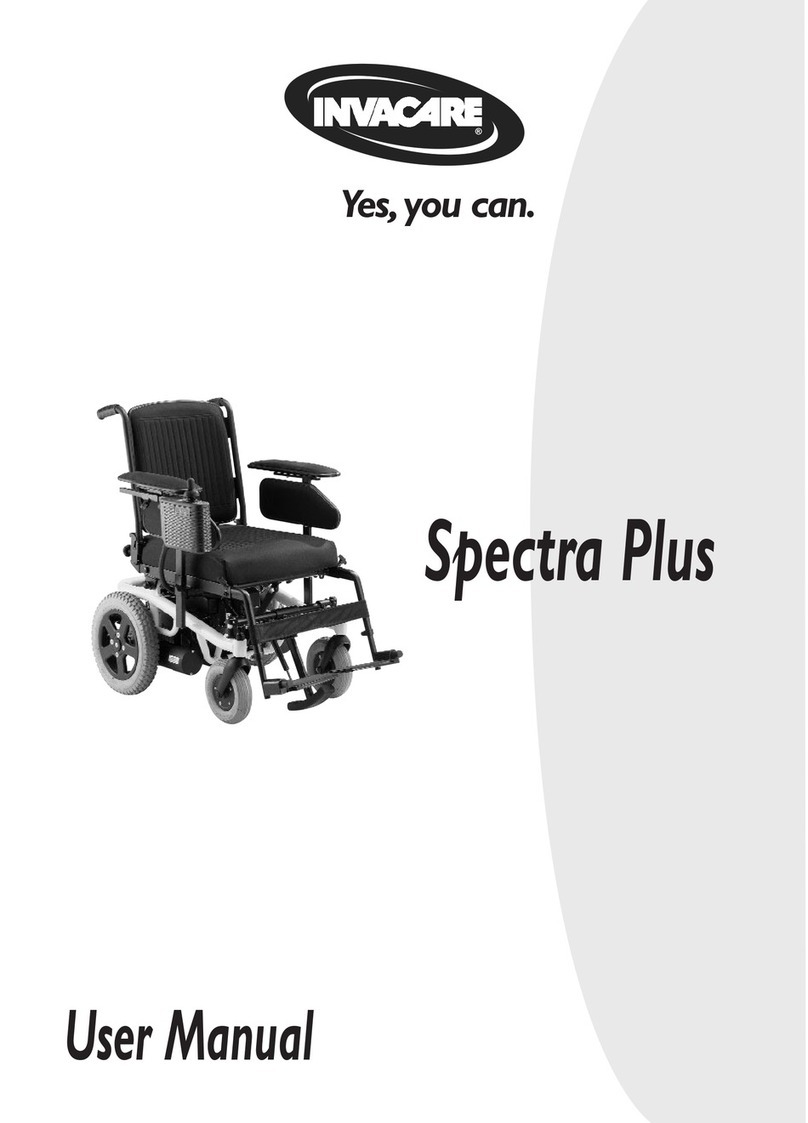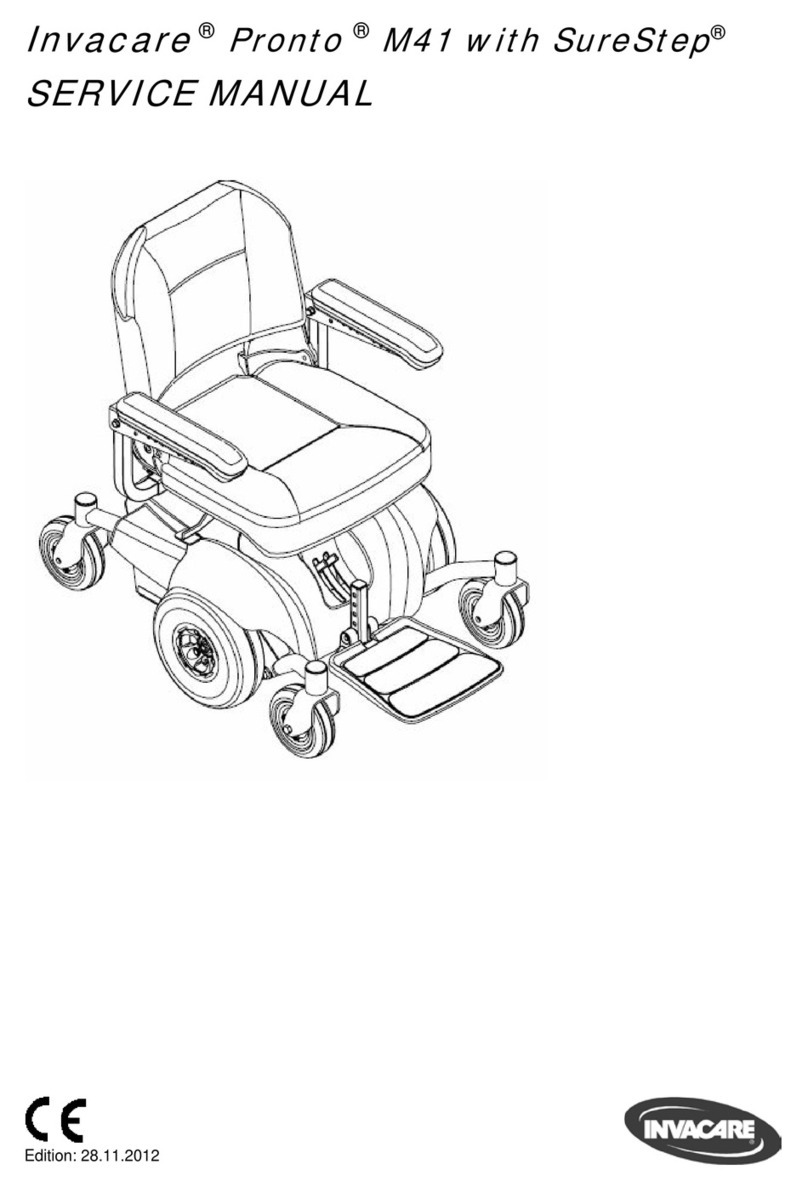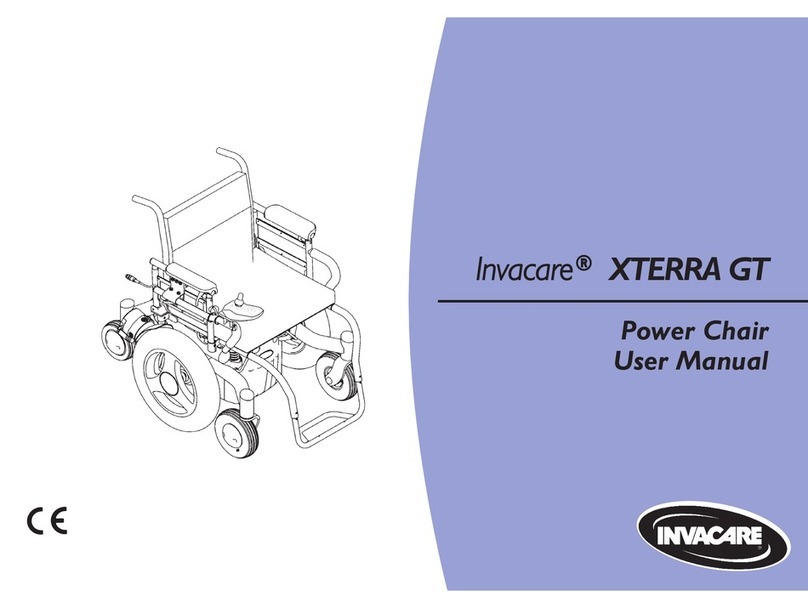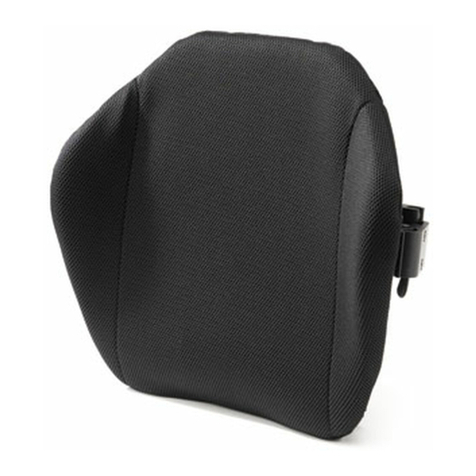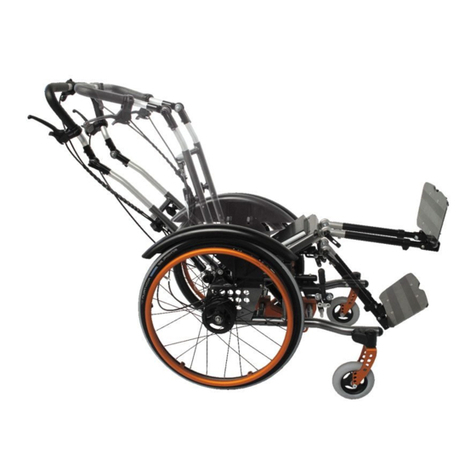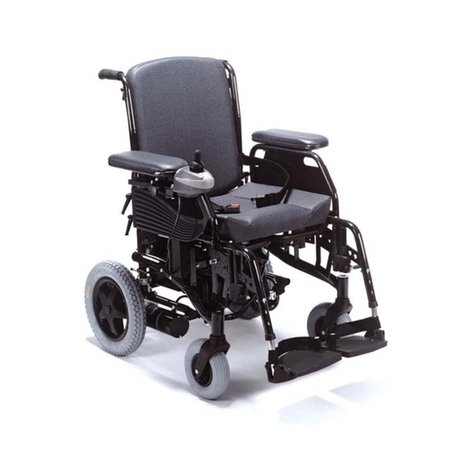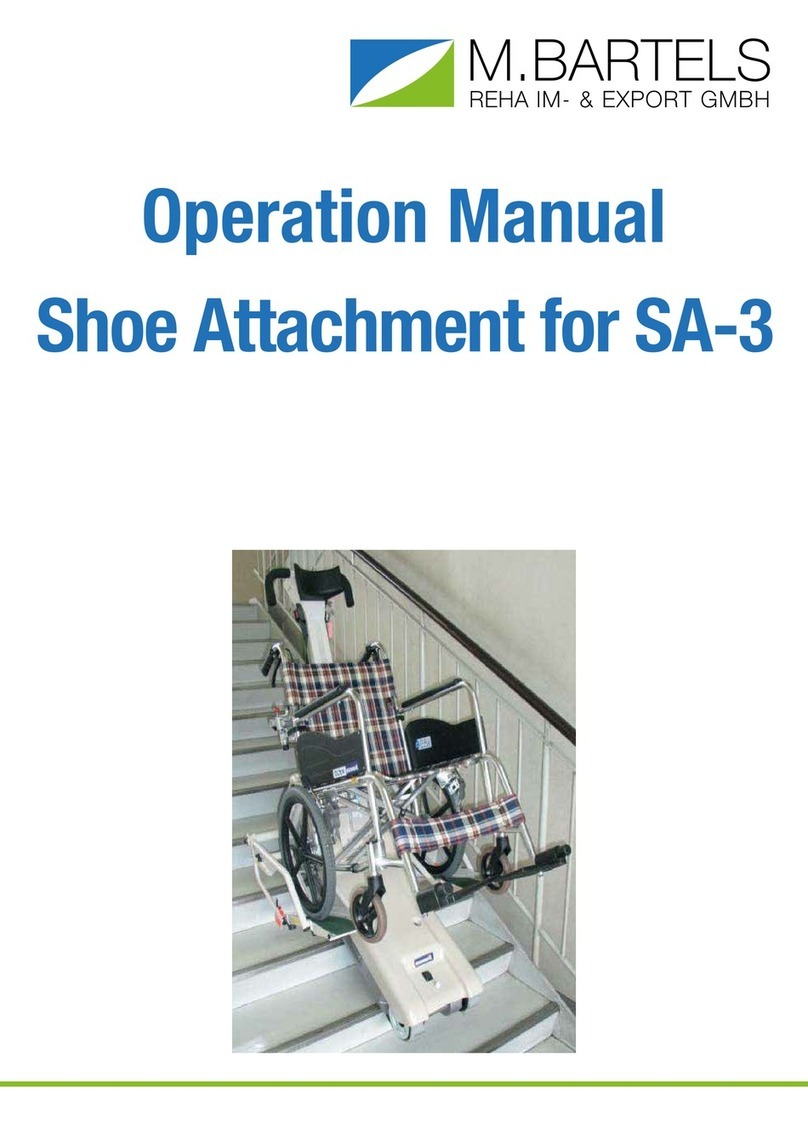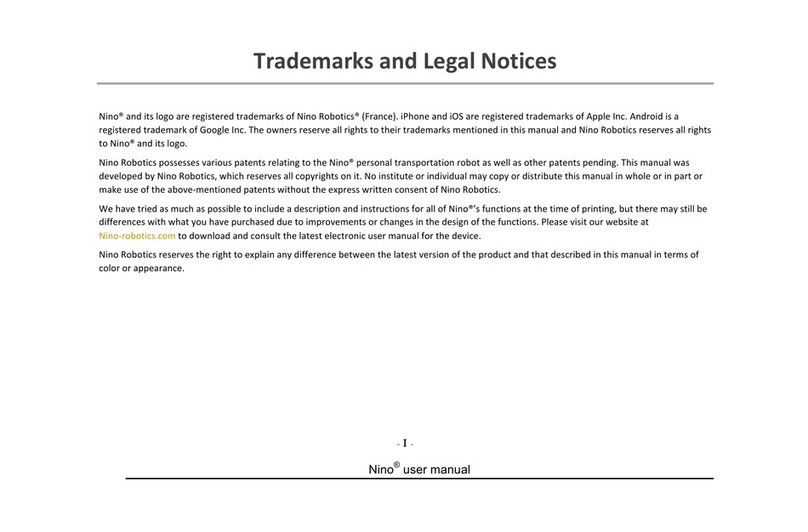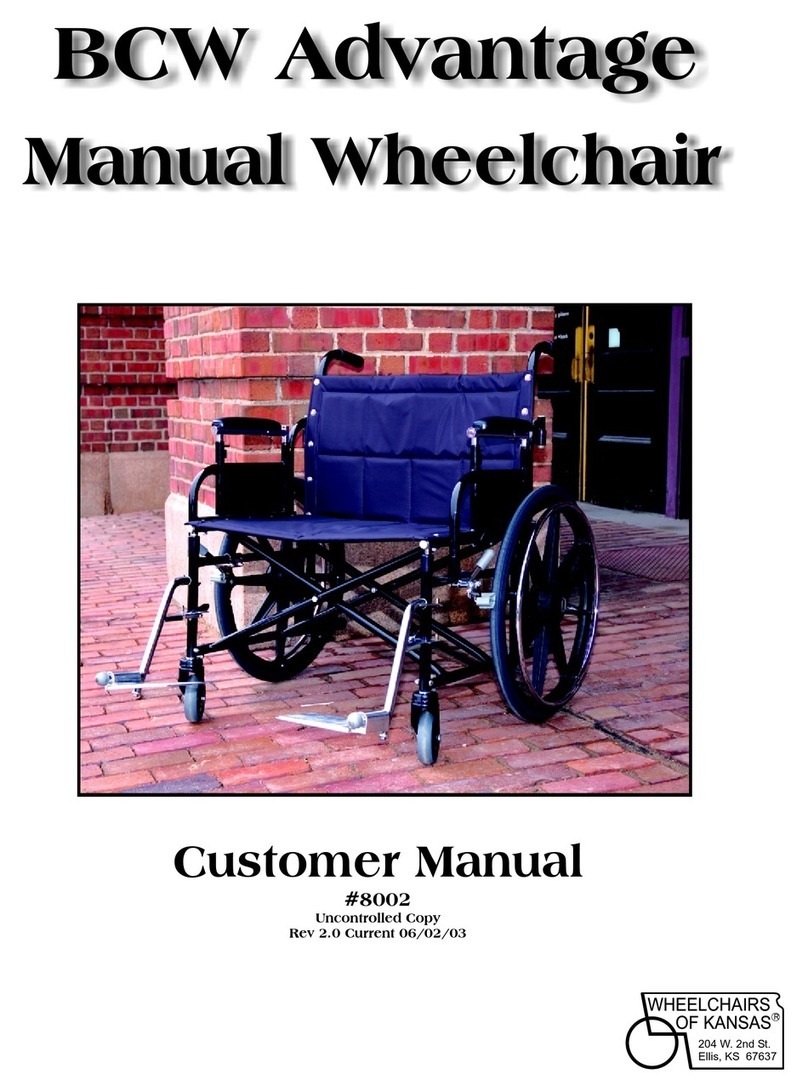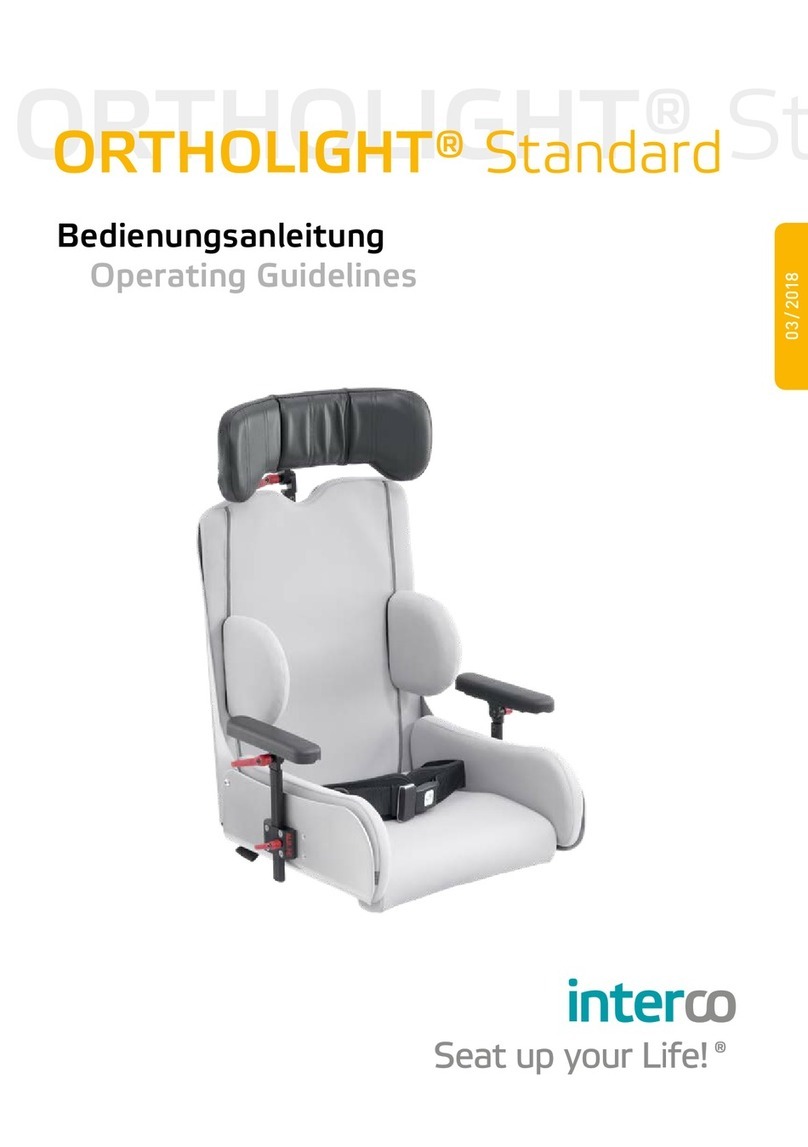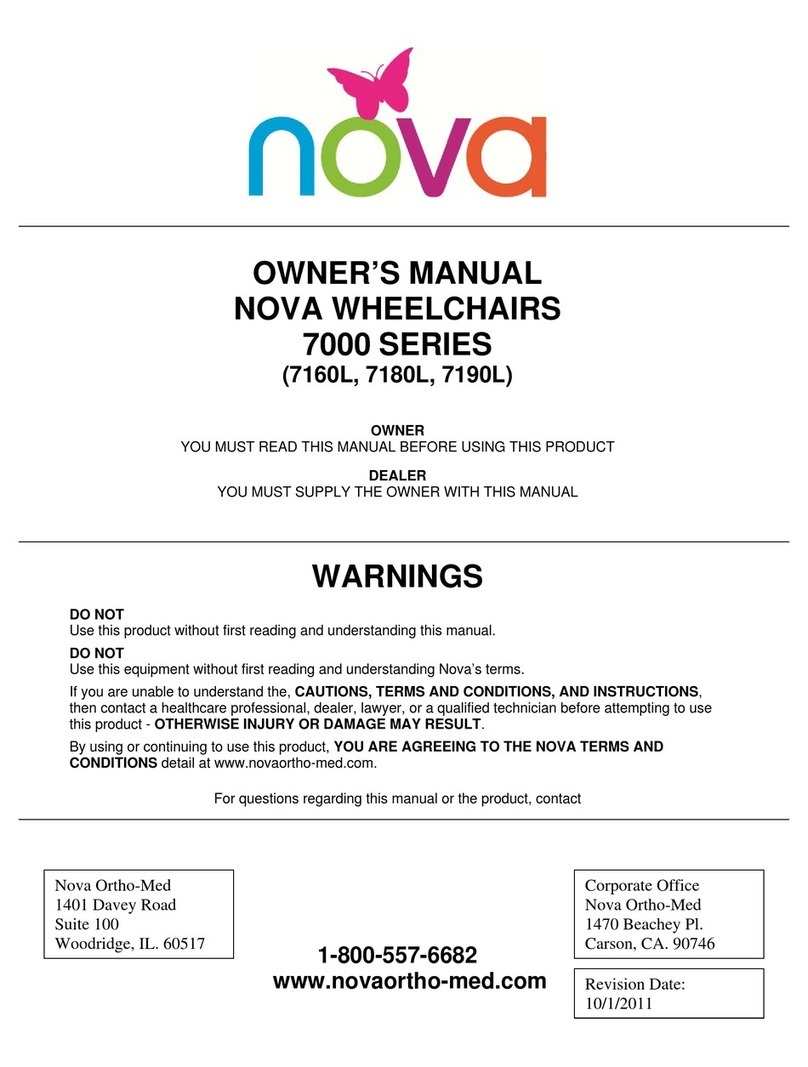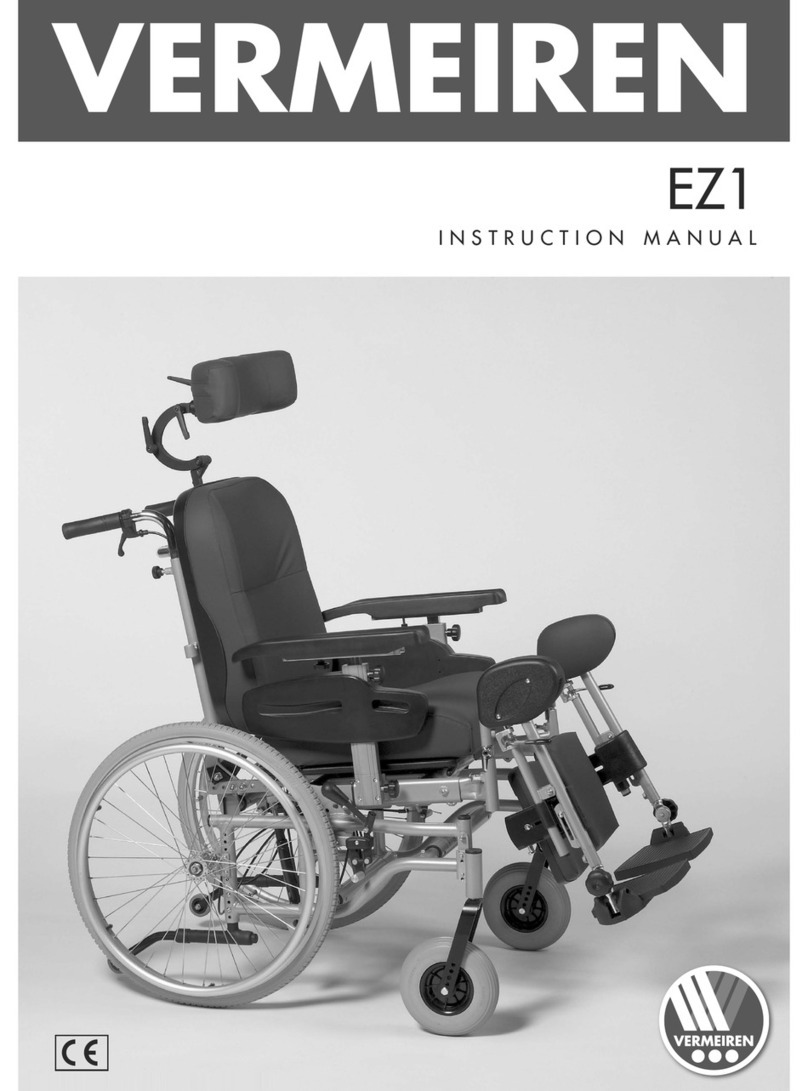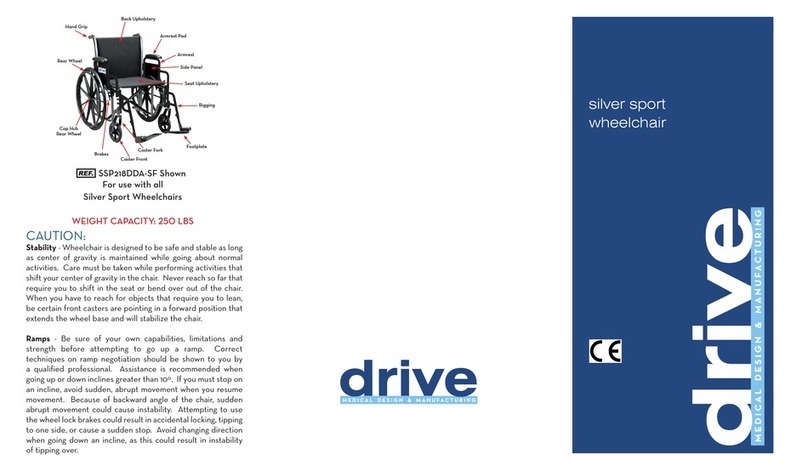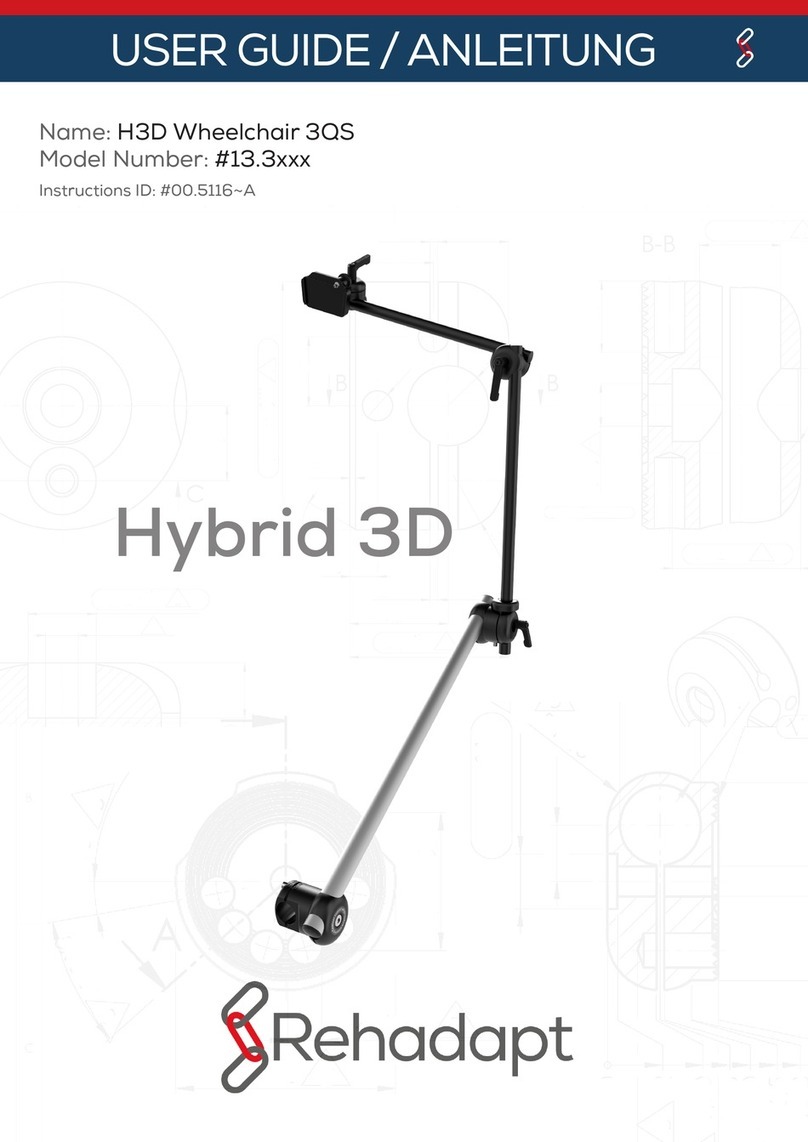
9
SAFETY/HANDLING OF
WHEELCHAIRS
“SafetyandHandling”ofthewheelchairrequirestheclose
attention of the wheelchair user as well as the assistant.
Thismanualpointsoutthemostcommonproceduresand
techniquesinvolvedinthesafeoperationandmaintenance
of the wheelchair. It is important to practice and master
thesesafetechniquesuntilyouarecomfortableinmaneu-
vering around the frequently encountered architectural
barriers.
Usethisinformationonlyasa“basic”guide.Thetechniques
thatarediscussedonthefollowingpageshavebeenused
successfully by many.
Individual wheelchair users often develop skills to deal
with daily living activities that may differ from those de-
scribed in this manual. Invacare recognizes and encour-
ageseach individualto try what works bestfor him/herin
overcomingarchitecturalobstaclesthattheymayencoun-
ter,however, ALL WARNINGSandCAUTIONS givenin
thismanualMUSTbefollowed.Techniquesinthismanual
are a starting point for the new wheelchair user and as-
sistant with “safety” as the most important consideration
for all.
Stability and Balance
WARNING
ALWAYS wear your seat positioning strap.
To assure stability and proper operation of your wheel-
chair,youmustatalltimesmaintainproperbalance.Your
wheelchair has been designed to remain upright and
stable during normal daily activities as long as you do
not move beyond the center of gravity. DO NOT lean
forward out of the wheelchair any further than the length
of the armrests.
Coping With Everyday Obstacles
Coping with the irritation of everyday obstacles can be
alleviated somewhat by learning how to manage your
wheelchair. Keep in mind your center of gravity to main-
tain stability and balance.
A Note to Wheelchair Assistants
When assistance to the wheelchair user is required, re-
member to use good body mechanics. Keep your back
straight and bend your knees whenever tilting wheel-
chair or traversing curbs, or other impediments.
Also, be aware of detachable parts such as arms or leg-
rests. These must NEVER be used for hand-hold or lift-
ing supports, as they may be inadvertently released, re-
sulting in possible injury to the user and/or assistant(s).
When learning a new assistance technique, have an
experiencedassistanthelpyoubeforeattemptingitalone.
Stairways
WARNING
DO NOT attempt to move an occupied power
wheelchair between floors using a stairway. Use
anelevatortomoveanoccupiedpowerwheel-
chair between floors. If moving a power wheel-
chairbetweenfloorsby means ofastairway,the
occupant MUST be removed and transported
independently of the power wheelchair.
Extreme caution is advised when it is necessary
tomoveanUNOCCUPIED powerwheelchairup
or down the stairs. Invacare recommends using
two(2)assistantsandmakingthoroughprepara-
tions.MakesuretouseONLYsecure,non-detach-
able parts for hand-hold supports.
DO NOT attempt to lift the wheelchair by any
removable (detachable) parts. Lifting by means
ofanyremovable(detachable)partsofawheel-
chair may result in injury to the user or damage
to the wheelchair.
Followthisprocedureformovingthewheelchair be-
tween floors when an elevator is NOT available:
WARNING
Theweightofthewheelchairwithouttheuserand
batteriesisstill between83and142lbs.Useproper
liftingtechniques(liftwithyourlegs)toavoid injury.
1. Remove the occupant from the wheelchair.
2. Remove the battery boxes from the wheelchair. Re-
fer to one (1) of the following:
FWD WHEELCHAIRS - INSTALLING/REMOVING
BATTERYBOXESinPROCEDURE11ofthismanual.
MWD WHEELCHAIRS - INSTALLING/REMOVING
BATTERYBOXESinPROCEDURE12ofthismanual.
3. Bend your knees and keep your back straight.
4. Using non-removable (non-detachable) parts of the
wheelchair, lift the wheelchair off of the ground and
transfer the wheelchair up or down the stairs.
5. The wheelchair should not be lowered until the last
stair has been negotiated and the wheelchair has
been carried away from the stairway.
ESCALATORS?SORRY!
DO NOT use an escalator to move a wheelchair
between floors. Serious bodily injury may occur.
G
E
N
E
R
A
L
G
U
I
D
E
L
I
N
E
S
GENERAL GUIDELINES PROCEDURE 1

